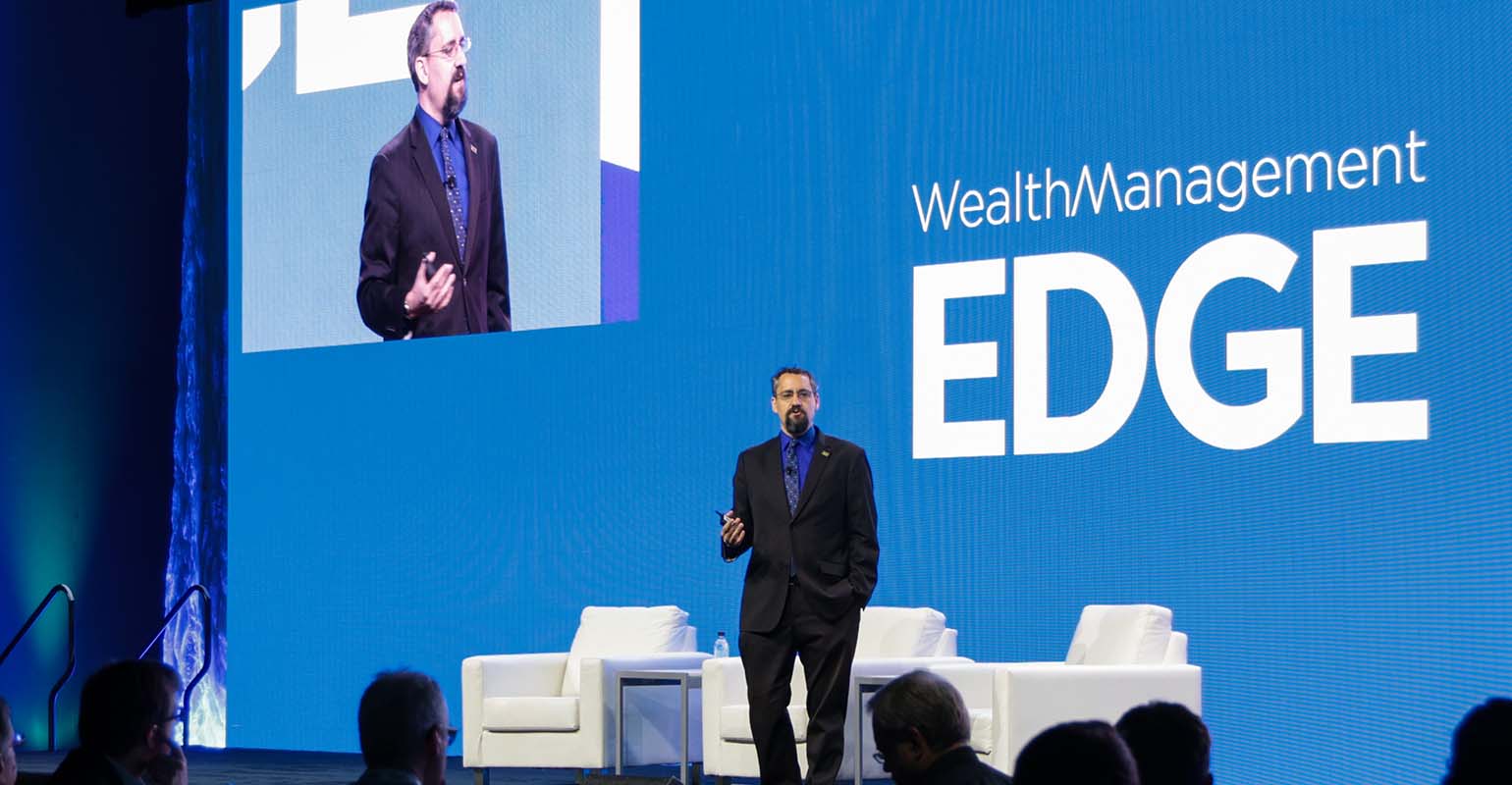The “growthiest” companies are those who rely the least on consumer referrals, XYPN co-founder Michael Kitces mentioned on the Wealth Administration EDGE convention at The Diplomat Seaside Resort in Hollywood, Fla.
It’s not that consumer referrals don’t happen amongst profitable companies, however the income from the remainder of their advertising and marketing spend is obliterating the brand new consumer income they generate through referrals.
Their strategy doesn’t depend on advisors to drive progress, as a result of as they (and their time) develop into dearer, it makes much less sense to place them within the place of agency entrepreneurs, as they find yourself being “actually costly, inefficient entrepreneurs” who don’t have the time to do it proper, he mentioned.
In a separate hearth chat, Klein agreed, saying, “advisors don’t actually wish to be salespeople.”
“We’re the one trade that I can discover that thrusts folks with finance levels and financial levels who’re centered on practitioners into being the expansion engine for the agency,” he mentioned.
Throughout his presentation, Kitces quizzed attendees about how a lot they spend on advertising and marketing, with virtually 50% of respondents saying they spent 3% or much less. However Kitces argued this doesn’t mirror what companies actually spend, as a result of as advisors construct out relationships, work referrals, community and do different consumer improvement duties, a portion of the agency’s advertising and marketing cash actually exhibits up in advisor compensation.
By transferring a portion of the advisor compensation to the agency’s advertising and marketing allocation, Kitces’ crew uncovered a shocking pattern.
After breaking down agency dimension, in addition to their exhausting greenback advertising and marketing spend and the quantity of advisor compensation (and time) devoted to advertising and marketing, they discovered that the larger the agency will get, the extra the exhausting greenback spend goes down whereas the advisor compensation dedicated to advertising and marketing spikes upward.
For companies with greater than $1.5 million in income, 6.6% of the share of income was dedicated to paying advisors for advertising and marketing, in contrast with just one.7% of exhausting advertising and marketing {dollars}. It’s a scaling downside, in a way, Kitces mentioned. Because the enterprise grows, the advisor will get dearer (this isn’t essentially an issue for house owners, as their advisor is driving large enterprise).
“The extra we pay advisors to service their present purchasers, the dearer it will get to pay them to get new purchasers,” he mentioned. “And it actually begins breaking our advertising and marketing.”
Advertising and marketing tends to be some of the scalable components of an advisory enterprise, however by counting on advisor referrals and self-marketing, companies are likely to decide to a technique that scales the least, in line with Kitces. He discovered advisors typically depend on referrals as a result of they don’t have the time to do the rest, however it concurrently turns into more durable to ask for referrals as a result of if they’re is profitable, the onboarded consumer should be invaluable sufficient to be definitely worth the time spent.
For prime-growth advisors underneath $250,000 in income, referrals tended to make up 27% of the brand new consumer income, in comparison with 63% for non-high-growth companies. However beginning within the $500,000-$749,000 vary, the disparity grew much more drastic, with high-growth companies counting on referrals for 33% of recent consumer income, in comparison with 83% at different companies (ending with 42% vs. 86% amongst companies with income exceeding $1.5 million).
For Klein, the method for advisors driving progress stays “a little bit of the Wild West” at many companies, and the high-growth companies with diminished referral percentages are discovering that a normal set of instruments truly drives the outcomes companies are in search of.
“What we’ve come to comprehend, and what we’ve been constructing for the previous decade, is for those who equip that fiduciary advisor to drive that course of in a constant method, you’re going to show that fiduciary advisor into the expansion engine for the agency with out twisting them into one thing they don’t truly wish to be,” Klein mentioned.


